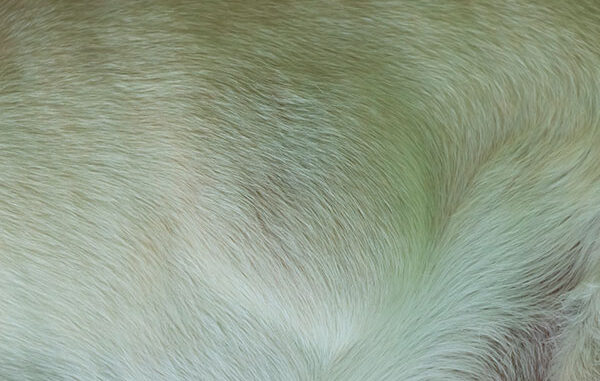
This article was updated on September 1st, 2023
Lipomas are very common tumors in dogs. These tumors are benign (not cancerous) and are typically seen in middle-aged and older dogs.
Pictures of Lipomas
Lipomas vary widely in size and rate of growth. Because the tumors are comprised of fat cells, overweight dogs are more likely to develop them and more likely to have rapid growth of the tumors.
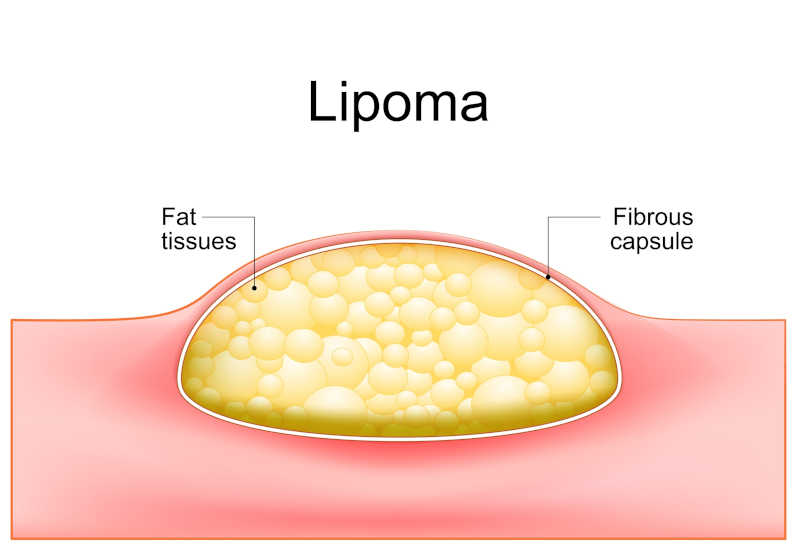
Below are a few example pictures of lipomas on a dog:
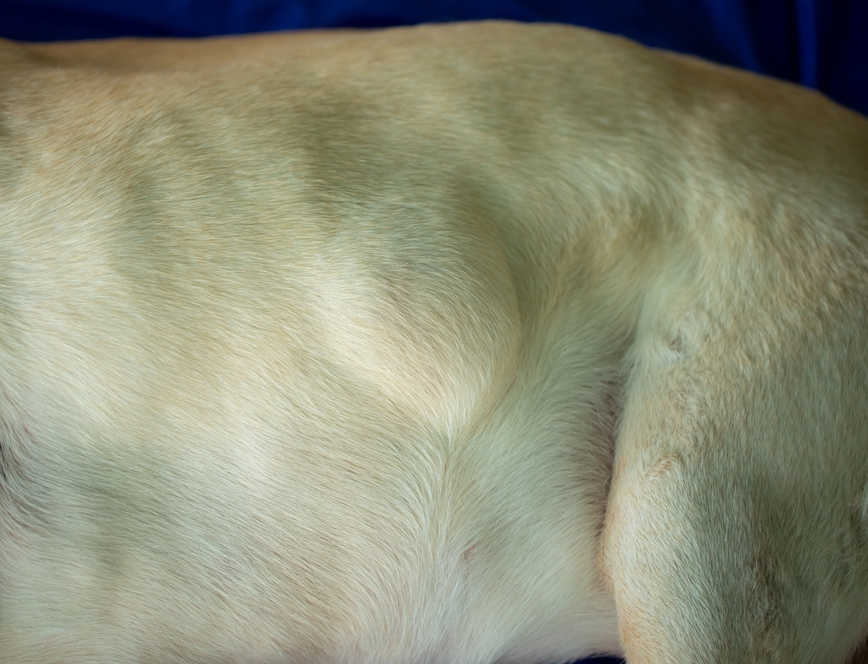
Almost all lipomas are located just beneath the dog’s skin, making them easy to feel:
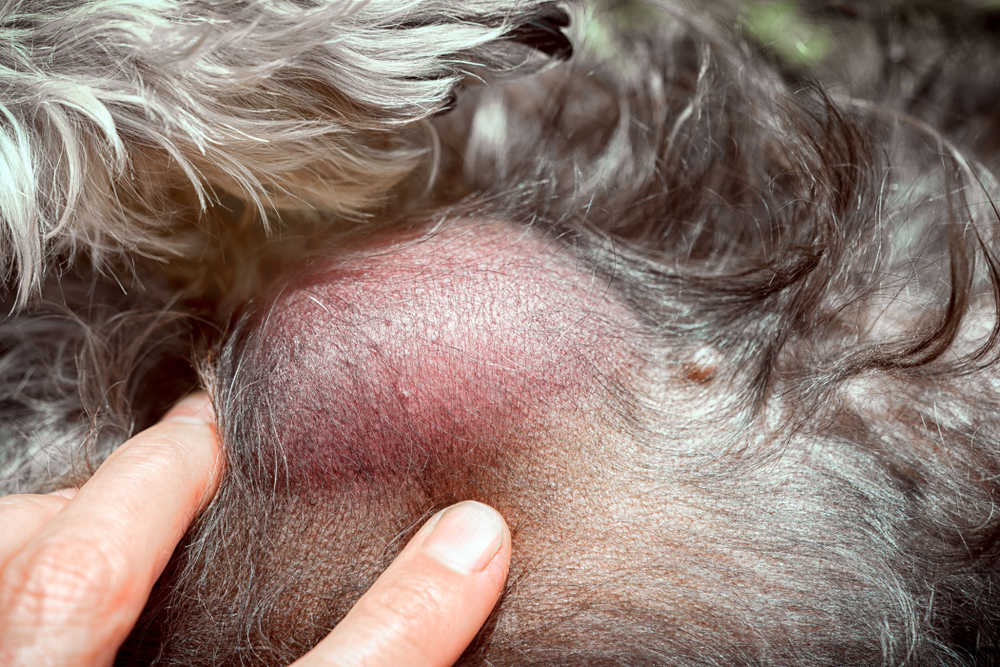
NOT a Lipoma
On the picture below, the lump on the dog is NOT a lipoma. The lump is attached to the skin as opposed to under the skin (see our page featuring common dog lumps and bumps).
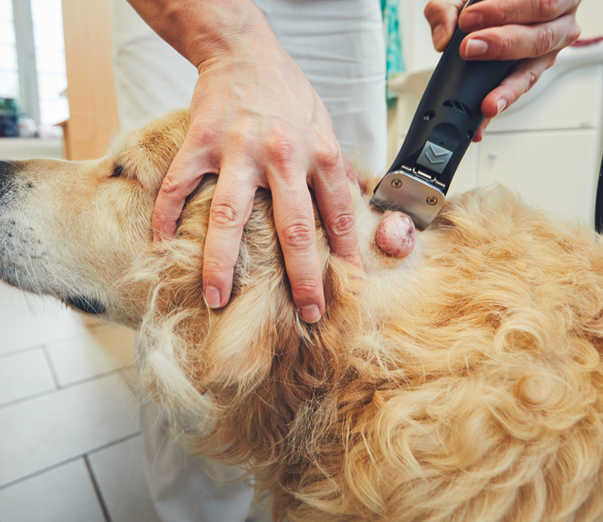
Are Lipomas Serious?
Though benign, lipomas can cause health issues for dogs, depending on their location on the body. For example:
- If it is formed in the axillary (underarm) or inguinal (groin) area, it may inhibit the dog’s movement.
- Lipomas located near the penis, anus, or vulva can interfere with the dog’s ability to urinate and defecate.
Although many veterinarians consider these fatty lumps a normal part of the aging process in dogs, they can also be a sign of certain health conditions:
- Dogs who are overweight are more prone to developing them.
- Dogs with hypothyroidism and other metabolic problems are also at an above-average risk of having lipomas.
Almost all lipomas are located just beneath the dog’s skin, making them easy to feel. However, some form under the muscle or even in the chest or abdominal cavity. When they are found in-between or under the muscles, they are termed infiltrative lipomas: because of where they grow, these lipomas are more likely to cause issues for the dog as opposed to lipomas located just under the skin.
Cancerous Lipomas
Though true lipomas are benign, there are cancerous fat cell tumors in dogs. These malignant variations are called liposarcomas. When palpated, these tumors feel very similar to lipomas, but they have more aggressive behavior. This typically includes rapid growth and recurrence after surgical removal.
Do Lipomas Grow or Change or Disappear Over Time?
Sometimes lipomas will stop growing and stay the same size, but they don’t often disappear or get smaller. Some will keep growing slowly and enlarge over time.
Luckily most lipomas are benign. However, they may continue to grow and lead to health issues if not removed. A dog with a lipoma that gains weight is likely to experience an increase in the size of the lipoma.
Depending on where they are located, lipomas can cause also cause put pressure on internal organs. In very rare cases, more concerning tumors can be embedded within or beneath the lipoma. Therefore monitoring these growths and having then assessed by a veterinarian is important.
Once a dog develops one lipoma, there is a tendency for them to develop more over time, whether or not the initial one is removed surgically.
Do They Eventually Go Away On Their Own?
Lipomas in dogs may shrink if the dog loses weight, but they will not go away without surgery. No at-home remedies will shrink or get rid of a lipoma, including diet changes, food, or supplements.
Can I Do Anything To Prevent My Dog from Getting More of Them?
Managing your dog’s weight is the best way to prevent lipomas as overweight dogs have a higher tendency to develop them. Unfortunately, there is no other effective way to prevent lipomas in dogs.
Treatment Options
Veterinary opinion on the best treatment options is varied, and your veterinarian will likely have their own take on this.
Considerations for treatment should include a determination of whether or not the tumor is causing the dog any discomfort. Some owners elect to remove unsightly lipomas for cosmetic reasons. However, consideration should be given to the risk of post-surgery complications.
Lipomas that arise in the underarm, groin, and around the genitals should likely be removed as soon as possible, because the larger they grow, the more difficult complete surgical removal will be.
Smaller lipomas require smaller incisions to remove and require much less invasive surgical techniques. Below is a picture of a dog recovering from surgery:
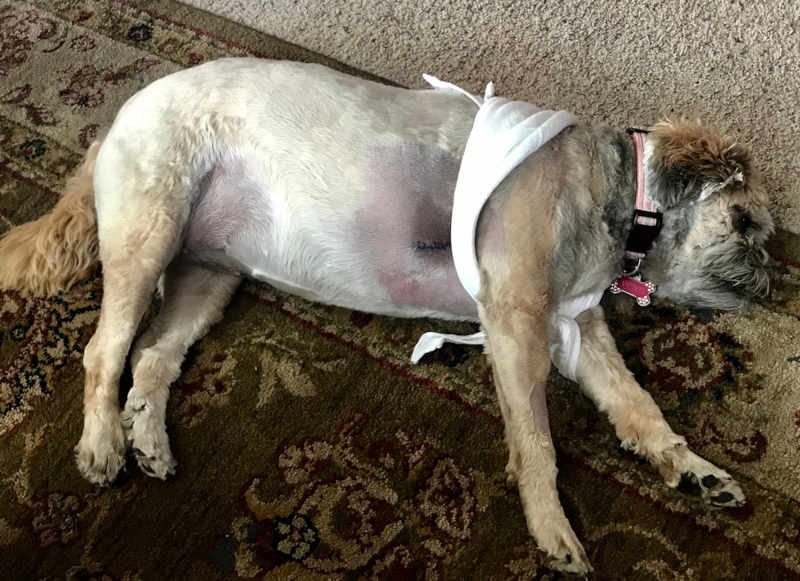
Veterinary Cost Estimates
You will find below an estimate of the costs typically associated with treatment. Keep in mind that costs will vary based on location and your dog’s particular situation:
- Sample test: $30 to $100.
- Surgical removal : $250 to $500 (up to $1,000 for rare cases where the growth is invasive)
How Often Do Dogs Get Lipomas?
Clinically, lipomas are one of the most commonly diagnosed tumors in dogs. They were found to have a 1.94% one year prevalence in a study population of dogs in the UK. A one year prevalence is the proportion of the studied population that has a particular condition at some time during a year.1
Diagnosis
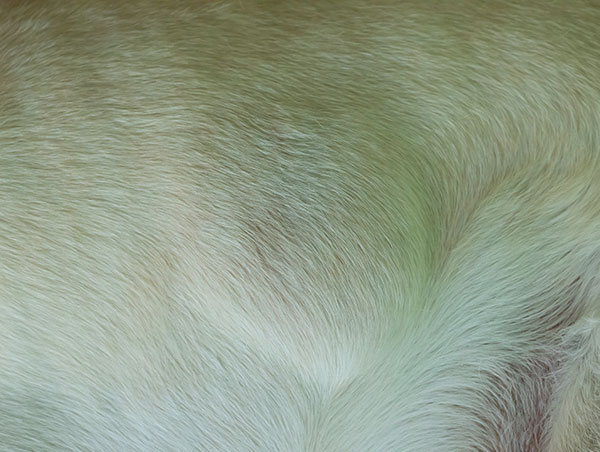
The owner is often the first to notice a lipoma on their dog. These tumors are typically located on the dog’s trunk and are squishy and freely moveable.
If a lipoma is suspected, the owner should consult a veterinarian. The doctor will likely start by gathering a complete history, examining the pet, and performing a sample test.
- Sample test: A fine needle aspirate is a simple procedure that can be done in the veterinarian’s office, most often without the need for sedation. A small needle is inserted into the suspicious tumor, and a syringe is used to draw out some of the cells. The cells from the tumor are placed onto a slide and then examined under a high-power microscope. If the veterinarian has any doubts about what he or she is seeing, the slides may need to be sent out for review by a veterinary pathologist.
- Biopsy: If the diagnosis still isn’t clear after a veterinary pathologist’s review, a biopsy or simply removing the entire tumor may be recommended. It is important to remember that a fine needle aspirate only takes a very small number of cells and may lead to inconclusive results.
If the tumor is taken off in its entirety, it should be sent for review by a veterinary pathologist. This will allow for accurate diagnosis of the tumor type as well as a determination of the margins of the tumor. Measuring margins will ensure the entire tumor has been removed.
Causes
As is the case with all cancers, the exact cause of lipomas in dogs is largely unknown. It is likely multifactorial, meaning that there are many factors at play. Genetics, age, heredity, health status, and environmental exposure all likely play a role in the formation of lipomas in dogs.
Frequently Asked Questions
What are the most frequent locations for lipomas to be found in dogs?
They are most frequently found on the trunk in dogs. This includes both the chest and abdomen. It is possible, but less common, for lipomas to form on the neck and limbs.
Which dogs are most likely to develop lipomas?
Overweight and older dogs are much more likely to have lipomas.
Also, lipomas are more common in Weimaraners, Dobermann Pinschers, German Shorthair Pointers, Springer Spaniels, and Labrador Retrievers.1
Does a lipoma on a dog need to be removed?
The majority of dog lipomas are harmless and do not need to be surgically removed, unless the lipoma is:
- creating discomfort to your dog or inhibiting essential movements
- preventing bodify function. For example if it is located near the penis, anus, or vulva where it can interfere with the dog’s ability to urinate and defecate
- located in an area where future growth will become problematic
Read More About Dog’s Lumps and Bumps:
 11 Types of HARD Lumps on Dogs [With Pictures] - Hard lumps can be a wide range of things, some of which are worrying and sinister and others that are… [...]
11 Types of HARD Lumps on Dogs [With Pictures] - Hard lumps can be a wide range of things, some of which are worrying and sinister and others that are… [...]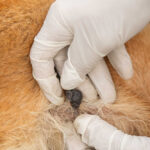 6 Types of Black Lumps on Dogs [With Pictures] - It can be concerning to see a new black lump on your dog, particularly because black growths may mean cancer… [...]
6 Types of Black Lumps on Dogs [With Pictures] - It can be concerning to see a new black lump on your dog, particularly because black growths may mean cancer… [...] White Bumps on Dogs: 7 Vet-Explained Causes with Pictures - White lumps and bumps might seem unusual. However, as a veterinarian, I have seen them more often than you might… [...]
White Bumps on Dogs: 7 Vet-Explained Causes with Pictures - White lumps and bumps might seem unusual. However, as a veterinarian, I have seen them more often than you might… [...] 5 Causes of Bumps on a Dog’s Chin [Pics & Vet Advice] - It’s always concerning to see bumps developing on your dog’s chin: they’re unsightly and often cause your dog irritation and… [...]
5 Causes of Bumps on a Dog’s Chin [Pics & Vet Advice] - It’s always concerning to see bumps developing on your dog’s chin: they’re unsightly and often cause your dog irritation and… [...] Chest or Rib Cage Lumps In Dogs [Vet Advice] - Lumps and bumps on dogs' chests and rib cages are a common finding in our vet clinic, especially in older… [...]
Chest or Rib Cage Lumps In Dogs [Vet Advice] - Lumps and bumps on dogs' chests and rib cages are a common finding in our vet clinic, especially in older… [...] Mast Cell Tumors vs Histiocytomas in Dogs [10 pictures] - According to research, histiocytomas make up 15.9% of tumors found in dogs, while mast cell tumors make up 17.8%. In… [...]
Mast Cell Tumors vs Histiocytomas in Dogs [10 pictures] - According to research, histiocytomas make up 15.9% of tumors found in dogs, while mast cell tumors make up 17.8%. In… [...] Red Alert: 9 Types of Red Lumps on Dogs [With Pictures] - Seeing a new red lump or bump on your dog can be scary. But don't jump to conclusions just yet.… [...]
Red Alert: 9 Types of Red Lumps on Dogs [With Pictures] - Seeing a new red lump or bump on your dog can be scary. But don't jump to conclusions just yet.… [...] Mast Cell Tumors In Dogs: A Veterinarian’s Guide for Owners - Mast cell tumors are one of the most common forms of cancer in dogs. They account for almost 20-25% of… [...]
Mast Cell Tumors In Dogs: A Veterinarian’s Guide for Owners - Mast cell tumors are one of the most common forms of cancer in dogs. They account for almost 20-25% of… [...] Is It a Dog Wart or a Skin Tag? How to Tell the Difference [6 Pictures to Compare] - Warts and skin tags are common occurrences on our pup’s skin. At first glance, they may appear the same, but… [...]
Is It a Dog Wart or a Skin Tag? How to Tell the Difference [6 Pictures to Compare] - Warts and skin tags are common occurrences on our pup’s skin. At first glance, they may appear the same, but… [...] Pictures of Dog Skin Lesions or Lumps Due to Cancer - As a veterinarian, I often come across dog parents who are concerned about their pet's skin lesions or lumps and… [...]
Pictures of Dog Skin Lesions or Lumps Due to Cancer - As a veterinarian, I often come across dog parents who are concerned about their pet's skin lesions or lumps and… [...]Citations
1. “Lipoma in dogs under primary veterinary care in the UK: prevalence and breed associations.” https://www.ncbi.nlm.nih.gov/pmc/articles/PMC6161450/.
Disclaimer: This website's content is not a substitute for veterinary care. Always consult with your veterinarian for healthcare decisions. Read More.


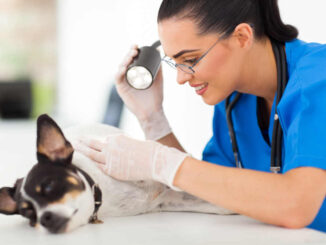

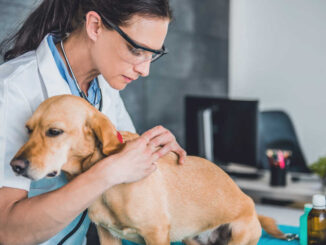
Thanks for sharing this informative post! The pictures really helped clarify what to look for. I had no idea lipomas could vary so much in appearance. I’ll be keeping an eye on my dog after reading this!
Thank you for this informative post! I had no idea lipomas could look so different. The pictures really helped me understand what to look for on my dog. It’s good to know that most of them are benign, but I’ll definitely keep an eye on any changes.
Great post! The pictures really helped me understand what to look for with lipomas in my dog. I had no idea they could vary so much in appearance. Thanks for the information!
Thank you for this informative post! I had no idea lipomas could look so different. The pictures really helped me understand what to look for on my dog. I’ll definitely keep a closer eye on her!
Thank you for this informative post! I had no idea lipomas could look so different in dogs. The pictures really helped clarify what to look for. My lab has a few bumps, and now I feel more equipped to discuss this with my vet. Appreciate the insights!
Thank you for this informative post! The pictures really helped clarify what lipomas look like in dogs. It’s comforting to know that most of them are benign. I’ll definitely keep an eye on my pup for any changes!